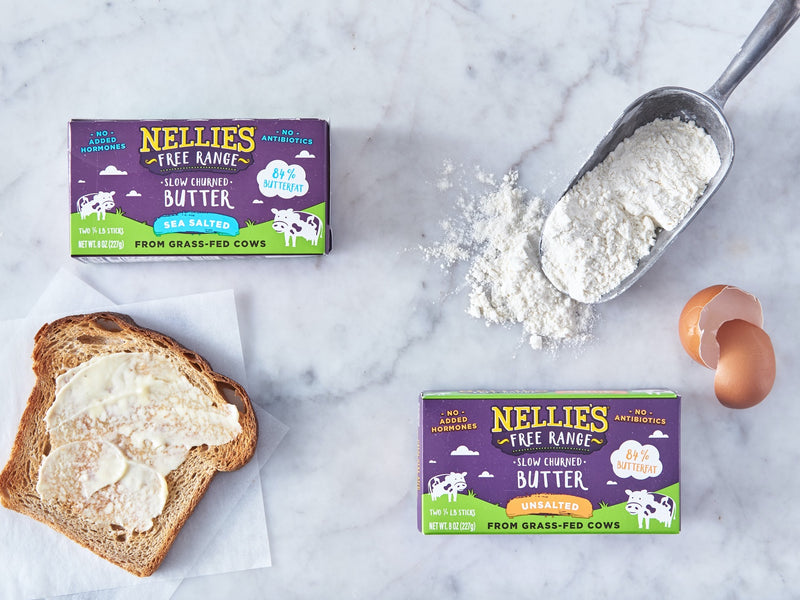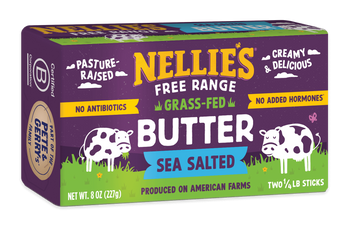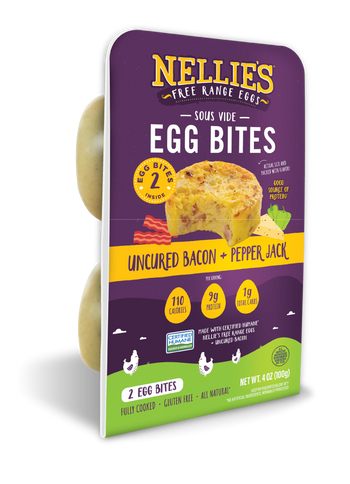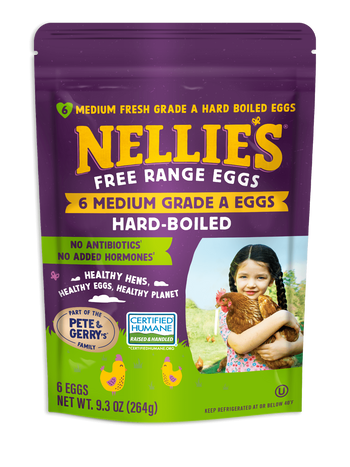
You may have found yourself wondering: What's the difference between salted and unsalted butter? Which one should I use for baking, sautéing, or spreading on toast? As you might have already guessed, there's only one key difference between the two: salted butter contains added salt, while unsalted butter does not. Despite this simple distinction, there are certain benefits to each type of butter and specific uses that one is better suited for than the other.
Benefits of unsalted butter
Unsalted is the simplest form of butter, and unsalted butter has the shortest ingredient list on the butter shelf, typically containing nothing more than sweet cream or pasteurized cream (and in some cases, natural flavoring). When it's not masked by salt, the flavor of sweet cream really shines through. Using unsalted butter also gives you complete control over the amount of salt in your recipe, making it a great option for those who are watching their sodium intake.
When to use unsalted butter
Some recipes specifically call for unsalted butter, but for those that simply list "butter" in the ingredients list, you can assume that unsalted butter is the best option. When cooking, it's easier to add than remove. For example, when sautéing veggies, you can always adjust the salt content to your taste, but it's not possible to remove the salt. In other words, starting with unsalted butter as a baseline never hurts. Unsalted butter is also a great option for recipes that are finished with flaky sea salt or kosher salt, which can easily become oversalted if made with salted butter.
Baking with unsalted butter
Most baked goods and sweets—especially bread—should be made with unsalted butter, even if the recipe simply calls for "butter." Exceptions include nutty treats such as peanut butter cookies that pair nicely with a little extra salt.
Benefits of salted butter
The biggest benefit of using salted butter is heightened flavor. Salt is a natural flavor enhancer, and brings out all the nuances of butter itself while balancing the sweeter notes. Similarly, salt is a natural preservative, and extends the shelf life of butter fairly significantly (typically an extra 30 days). In certain recipes, using salted butter negates the need to season with additional salt. In others, however, it's important to get into the habit of tasting for seasoning and adjusting to your preferences.
When to use salted butter
If a recipe requires salted butter, it will almost always call for it specifically. When used as a spread on toast, to top off pancakes or waffles, to finish corn on the cob, or to brush over bread that's hot out of the oven, salted butter is a great option. There are varying levels of salt in salted butters (typically 1-2% by weight or about 1/4 teaspoon per stick), but the salt level doesn't correspond to the quality of the butter.
How to substitute salted for unsalted butter (and vice versa)
Technically speaking, you can substitute salted butter for unsalted butter (and vice versa) in most recipes, with bread being the only exception because salt slows the rising process. To use salted in place of unsalted, simply cut any added salt that the recipe calls for in half. If that recipe uses a 1/4 teaspoon or less of salt, simply leave the added salt out completely. This still doesn't guarantee a balanced level of salt, so taste for seasoning and adjust when you can. Here's a good rule of thumb to following when pivoting between the two types of butter:
1/2 cup (1 stick) salted butter = 1/2 cup (1 stick) unsalted butter + 1/4 teaspoon of salt
No matter which type you choose you're in for a rich, buttery meal!











